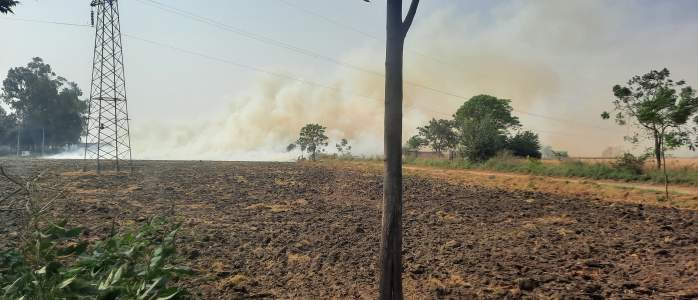



The Jan Vishwas (Amendment of Provisions) Bill, 2022, aims to reduce the compliance burden on industries and enhance the ease of doing business in India. But it also has implications for India’s air pollution regime. Last year, the Ministry of Environment, Forest and Climate Change (MoEFCC) invited comments from the public on the Bill. It proposes to introduce changes across 42 laws, including the Indian Forest Act, 1927, the Air Act, 1981, Environment (Protection) Act, 1986, the Public Liability Insurance Act, 1991, the Patents Act, 1970, and the Motor Vehicles Act, 1988. The Bill was tabled in Parliament on 22 December 2022 and referred to the Joint Parliamentary Committee for review. The Committee has now published its report, which is likely to be discussed in the next parliamentary session. The Bill has significant implications for the air pollution regime since it proposes amendments to laws that directly regulate it.
The Bill includes amendments to the Air Act, 1981, the Environment (Protection) Act, 1986, and the Motor Vehicles Act, 1988. A few laws that the Bill intends to amend such as the Public Liability Insurance Act, 1991, also have an indirect bearing on air pollution regulation. The changes proposed relate to the environmental deterrence mechanism, mode of prosecution and the scope of powers available to the Union government under the Air Act, 1981, among others. We break down what these amendments mean.
The amendment attempts to strengthen the Union government's power concerning air pollution regulation in India. Under the Air Act, the Centre is currently empowered to make rules pertaining to the function of the Central Pollution Control Board (CPCB) and resolve inconsistencies between directions issued by the central board and the state government, among others.
With the introduction of amendments under the Jan Vishwas Bill, the Centre will have the additional power to appoint Adjudicating Officers (AOs), who will act like quasi-judicial entities empowered to conduct inquiries, gather evidence and pass orders imposing penalties or file complaints before courts for trying offences punishable under the Air Act.
Decisions taken by AOs can be challenged before the National Green Tribunal, but only after submitting 10 per cent of the penalty imposed. It appears that appointing AOs may strengthen the enforcement of environmental laws by expediting the inquiry and decision-making process and supplementing the capacity of State Pollution Control Boards (SPCBs). However, the process of appointing AOs must be a consultative one, which includes inputs from the CPCB and SPCBs. Equally, the appointed AOs must take a consultative and scientific approach when assessing environmental compliance and estimating penalties arising from non-compliance. The Bill however overlooks the existing appellate authorities under the Air Act and how their jurisdiction may overlap with that of the AOs. It is unclear how these authorities will handle overlapping jurisdictions.
Further, the Bill also empowers the Centre to exempt certain industries in air pollution control areas (APCAs) 1 from the requirement of seeking consent to establish/operate, provided that the CPCB is consulted. However, the amendment prescribes no parameters by which such industries will be identified. It would be better to specify such parameters as doing so could mitigate the scope for discretion and rent-seeking. Additionally, the Centre should issue guidelines for SPCBs after consulting with CPCB regarding grant, refusal or cancellation of consent. The amendments also propose definitive penalties for companies violating the provisions of the Act for running industrial processes in APCAs.
The Jan Vishwas Bill proposes a remodelling of India's environmental deterrence regime by replacing several imprisonment provisions under the Air Act and other laws with higher monetary penalties that would go to the Environmental Protection Fund. The aim is to maintain a credible deterrence mechanism that also dissuades ‘minor’ transgressions. However, imprisonment will still be retained for certain offences. This aligns with the increasing acknowledgement that imprisonment should be reserved only for grave offences and used judiciously. For example, the proposed changes to the Air Act will decriminalise certain types of offences, such as those under Sections 37 (emitting pollution beyond prescribed standards), 28 (tampering with posts/stakes deployed on ground by CPCB/SPCBs), and 39 (flouting provisions for which no penalty has been provided in the Act) 2 , and only require the offender to pay the penalty amount. However, violating Section 21 (industries being operated/established without taking consent from SPCBs) 3 will still result in both imprisonment and a fine, which may be increased in the case of continuing failure to comply.
The fines prescribed under the Air Act are proposed to be replaced with significantly higher penalties, including for contraventions for which no penalty had been set previously under the Act. For instance, polluters failing to inform authorities about emissions that breached prescribed standards could earlier be imprisoned for up to 3 months and/or fined up to INR 10,000. The proposed amendment would make them liable to pay a penalty of not less than INR 10,000 but which may go up to INR 15 lakh. Further, as per the Bill, the minimum amount of penalty prescribed under the Bill will be increased by 10 per cent every three years.
Replacing imprisonment and fines with monetary penalties is expected to improve enforcement and increase the frequency of penalty recovery for wrongdoings. Imprisonment can be a lengthy process, mired in judicial rigmarole. As per government data from 2022, 1,737 cases were registered in the past three years under the Air Act, Water Act and Environmental Protection Act combined, which resulted in merely 39 convictions. This shows that punishing environmental offenders is a complex process and the deterrence created by imprisonment provisions is not very effective.
Further, if we compare fines with penalties, penalties offer a speedier recourse to justice. This is because while fines are imposed through due judicial process, penalties can be imposed directly by the regulators and government authorities. These changes may result in other benefits, too — reduced burden on the courts and reduced likelihood of an offence to continue. However, to ensure fairness in imposing penalties for violations, it is crucial to establish standard criteria for evaluating the penalty amount. The Centre must create rules for conducting inquiries and imposing penalties and the same must be adhered to by the AOs.
The Bill aims to remove ambiguity regarding punishment for government departments under the Air Act. The Air Act currently defines offences by government departments but does not prescribe what will be the implications of such offences. The amendment will clarify penalties for government officials found culpable under the Act and require them to pay at least one month's basic salary as a penalty.
It is crucial to conduct periodic regulatory impact analyses (RIA) after an amendment is passed to ensure that violations do not cause greater economic and social costs through pollution than the penalties collected. India’s National Clean Air Programme (NCAP) underscores the importance of such economic analyses in comparing the effects of air pollution with the benefits that arise from regulating the same. To ensure that the amendments are a success, it is crucial to collect penalties and present a credible deterrent to future violations. This in turn depends on a reliable monitoring and alert system that has the trust of stakeholders across the board and can help PCBs and AOs ascertain violations without resulting in disputes.
In conclusion, the Jan Vishwas Bill is likely to have a significant impact on India's air pollution control regime. The shift from imprisonment to monetary penalties for environmental violations could be a more effective deterrent and increase the frequency of offences being punished. However, the appointment of AOs must involve consultation with CPCB and SPCBs, and clear parameters must be established for exempting certain industries from consent requirements. Similarly, the danger of overlap with existing appellate authorities needs to be assessed carefully to avoid replication of forums for dispute resolution. Further, before issuing any additional guidelines related to the granting, refusal, or cancellation of consent, the Centre should consider the existing guidelines developed by the CPCB, SPCBs, and PCCs.
Overall, the amendments have the potential to push us in the direction of a more progressive and effective regime to regulate air quality in India. However, their enforcement must consider existing mechanisms and adhere to NGT’s previous directives on the amended aspects.
Aishwarya Tiwari is a Research Analyst at the Council on Energy, Environment and Water (CEEW), an independent, not-for-profit research organisation. Saumitra Jaiswal is Partner at Enviro Legal Defence Firm, leading the Air Sector, having assisted in the landmark case of NGT – Vardhaman Kaushik Vs Union of India & Ors. Send your comments to [email protected]
1APCAs are areas with high levels of air pollution that are declared by CPCB and SPCBs and are strictly regulated (examples include National Capital Region (NCR) and Mumbai Metropolitan Region (MMR)).
2 Under section 37, penalty can be imposed for violating provisions of section 22 (emitting pollution beyond prescribed standard) or section 31A (power of Central Government to issue direction in the exercise of its powers and performance of its functions under this Act). Under section 28, penalty can be imposed for certain acts provided under the said sections which includes – destroying, pulling down, removing any post or stake fixed in the ground by the authority of the CPCB/SPCBs/PCCs. Under section 39, penalty can be imposed for contravention of any provisions of this Act for which no penalty has been provided under the Act.
3 When an industry establishes or operates without availing consent from the SPCBs.






Add new comment